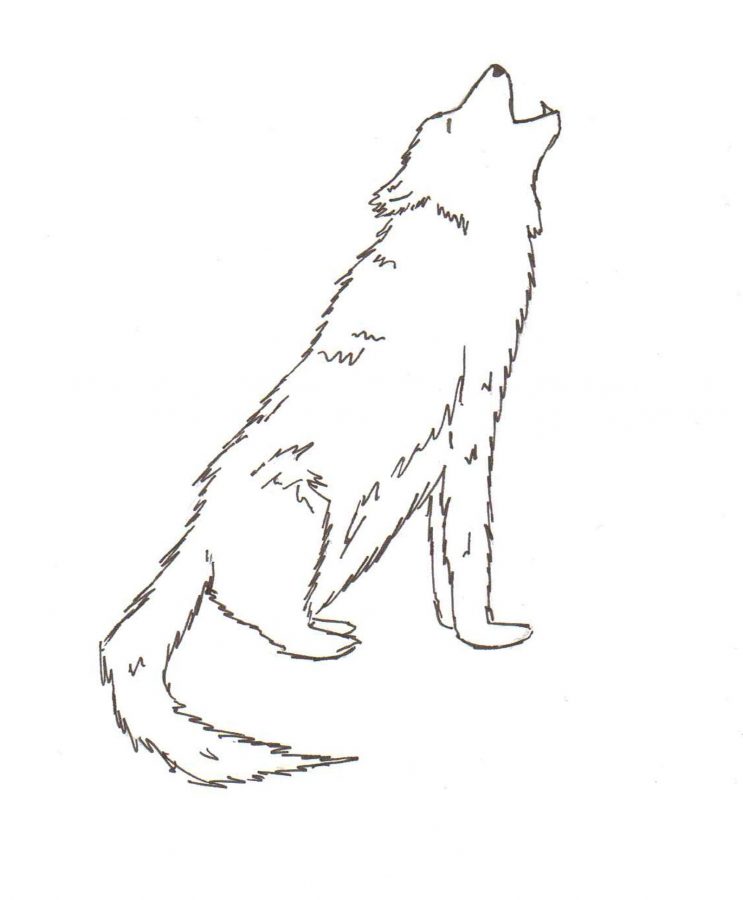Wolf hunting season begins
January 13, 2014
It’s January. A sub-zero temperature, allied with a snowy wind, cuts across an open field lined with tall pines in northern Minnesota. The sun slowly pokes through the tree line and gives the forest the rebirth of a new day. Squirrels find their buried food. Cardinals blair their alarm clock sounding song. To accompany all the critters in the North Woods, 650 anxious, but quiet, hunters wait patiently to feel the rush of their prey stepping out into the field for a clean, ethical shot. The prey can pick up on the scent of danger or food within an area just under two miles and 180 degree vision. The hunter’s prey have never been preyed on in their lives– they are, what some would argue, the supreme predator of North America. The prey? The wolf.
This year marks the second year of a legal wolf hunting season in Minnesota. wolves were taken of the Endangered Species List 2011. After being put on the list, Minnesota soon after pursued the thought of a wolf season, and for good reason too; wolf numbers in the 1950s were lower than 750, and now exceed 2,200. The Minn. Department of Natural Resources (DNR) took huge precautions to make sure wolves were not over-hunted as they were in the past.
The 2012, and now 2013, wolf hunting seasons were systematically split into three different hunting zones: East Central, Northeast and Northwest. Within the three hunting zones, there are three different times to harvest wolves: Early season, Late Rifle season and Late Trapping season. In the inaugural 2012 season, 413 wolves were harvested. All of the hunting zones experienced the harvesting of wolves, excluding the Late Hunting season in the East Central zone. To further more ensure that wolves will not be over-harvested, a target harvest number of Wolves is set in place for all seasons; once this target harvest number is reached, no more wolves may be harvested.
The 2013 season has wildlife biologists and wolf hunting enthusiasts cringing with excitement. When a wolf is harvested in any season on any day, the hunter or trapper must report their wolf to one of the 631 big game registering stations across Minnesota, on the Minn. DNR game registration page, or by calling the DNR. After registering, hunters must bring their harvested wolf to an inspection center. Inspection centers collect biological information on that Wolf to better understand the Minn. wolf population as a whole.
Many Minnesotans support the idea of the wolf season. The main goal of any hunting season is to not let populations get too high; wolf hunting is no different. Sophomore Walter Hubbard is an avid trapper who applied, without luck, for a wolf trapping tag.
“With the DNR having a deer hunting season in place to control the deer population from rising above a healthy number,” Hubbard said, “why is it harder to grasp the concept of a wolf season? It is for the betterment of the health and diversity of the wolf populations across Minnesota”
Although there is a huge amount of support for the wolf hunting season in Minnesota, some people think the wolf season is a huge mistake by the Minn. DNR with good reason too. In the past, wolves were hunted nearly to extinction. Also, wolves just got off of the federally-enforced Endangered Species List.
The DNR nursed the Minnesota wolf population back to health during its stages of rebuilding, and no they feel the time has come for regulations to be put on the Wolf population to make the Minn. Northwoods as biodiverse as possible.







